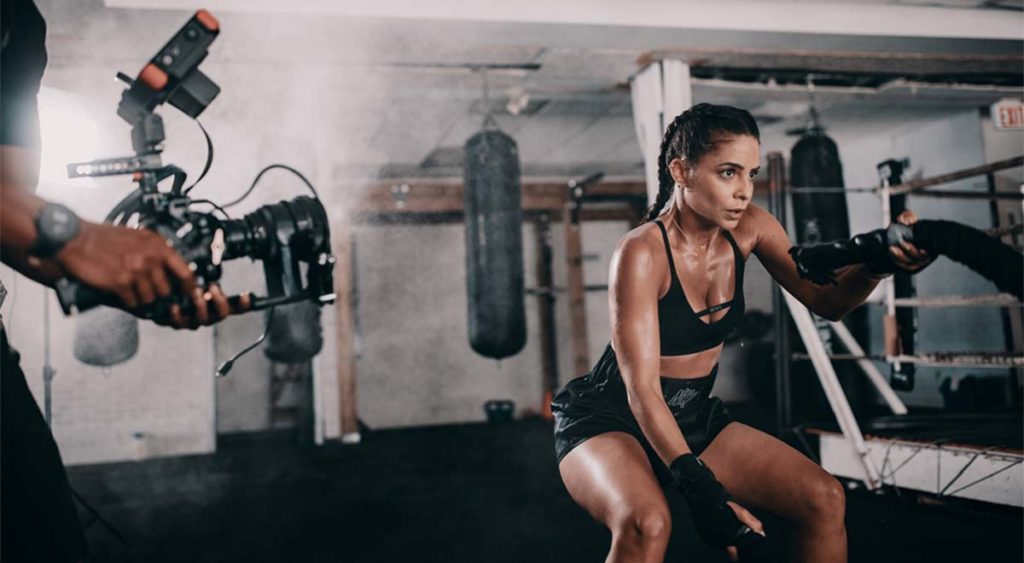Visual content and the way we use it is evolving. Innovative companies are reimagining their digital strategies and finding fresh and creative ways to use visual marketing to interact with consumers and promote their brands.
Consider the visual messages we encounter on any given day. They’re all around us. Signs, images, videos. Take a look at New York’s Times Square with its giant, illuminated billboards and iconic digital screens, and you can quickly see how pervasive visual marketing has become.

AUDIO: LISTEN TO THIS ARTICLE.
Advances in technology have made rich visual content more accessible to more people. These days, we have a better understanding of the relationship between the way we process information and visual content, and the two can pack a powerful punch in terms of how we engage consumers. It’s no wonder; visual content has become much more than a means to deliver a sales pitch.
Today, it’s estimated that 84% of communications are visual. Whether we realize it or not, visual marketing influences all of us.
Visual Marketing Gains Strength
Think about how we interact with our healthcare providers and educators, how we conduct banking transactions and make critical business decisions. The visual messages we come across as we carry out normal, day-to-day activities typify visual marketing.
In simple terms, visual marketing uses photos, videos, infographics, and illustrations—along with elements like color, light, type, space, and motion—to communicate information.

Businesses strategically use this visual content to make their interactions with consumers more memorable and engaging. Senior marketing executives believe that visual content plays a key role in the way consumers positively interact with businesses and is critical to a brand’s success.
By the same token, consumers also believe this content is highly effective in conveying information and overwhelmingly prefer it to communication without visuals.
Why Visual Content is Important
It’s easy to see why visual content plays a dominant role in marketing. Not only are more businesses using it to reach and engage a wider audience to reinforce their brands but we as consumers use it—a lot!
There are several compelling reasons for this. First, visual content makes it possible for consumers to interact with businesses at their own pace.
Second, it offers flexibility by providing options like videos, charts and graphs, or social media posts so they can engage with content using the format they like most.
And third, above all else, visual content helps consumers gather the information they need to make informed decisions that build confidence and trust.
Presenting quality content, that’s not only relevant but also simple to use and easy to understand allows businesses to provide this assurance to their prospective customers while also demonstrating leadership in their industry.
How Visual Content Works
Visual content is a powerhouse that has a huge impact on the way we consume information. When presented alongside visuals, we process, understand, and retain more information, and we do so more quickly and efficiently.
Visual content packs a one-two punch.
For one, it’s faster.
Ninety percent of information transmitted to the brain is visual, and the brain processes visual information 60,000 times faster than text.
And two, it’s twice as effective.
Content with relevant visual images almost doubles engagement—and this increase is noticed across all topics and categories. Recall also increases dramatically when text is paired with visual content.
Chances are your business already uses visual content to market your products and services, but take the long view. Consider how your company will adapt in the future as demographic trends shift and media technology advances.
[ Read: 5 Simple Steps to a Practical Video Marketing Strategy ]
The truth is, to remain competitive in the marketplace, all businesses should include compelling and meaningful visual content in their marketing plans.
How to use Visual Content Effectively
Many perceptive companies already have strategies in place that take advantage of visual content’s strengths and have had great success when using it to bolster their interactions with consumers and promote their brands to new audiences.
Take the fitness brand Reebok for example; when Reebok executives set out to transform the brand and reintroduce the company to a global audience, they launched “Be More Human,” a highly visual campaign.
The campaign is rich in visual content and includes inspiring online videos and interactive experiences like the successful “breakyourselfie” hashtag that challenges Reebok’s followers to share their post-workout photos across social platforms without filters, makeup, or enhancements.
Reebok’s campaign resonated with fitness-conscious consumers in a big way. It encouraged fans to celebrate their ability to tackle life’s challenges with grit and humanity.
It’s no surprise; the campaign became a catalyst for growth for the company. It led to successful event partnerships with notable franchises like the Spartan Race. For Reebok, the “Be More Human” campaign was a game-changer.

Video, the Undisputed Visual Heavyweight
When we look at the many different forms visual content can take, video is the clear leader. As a matter of fact, video has overtaken blogs and infographics, as the number one form of media used in content strategy. Brand storytelling and product or service promotion are the most widely used types of videos brands are investing in (HubSpot Global Survey).
Video has long been considered a juggernaut in the realm of visual marketing, and the use of video is growing rapidly, now comprising more than 80% of all consumer internet traffic. Cisco estimates that number will continue to rise. As a result, video production will account for one in every three dollars spent on online advertising over the next five years. In short, video has taken off.
Adding Video to your Visual Content Strategy
The preeminence of video in marketing has led more businesses to expand its use to help reach a broader audience, build better relationships with consumers, and educate and convert buyers.
Take the iconic outfitter Filson, which used the medium to build on the brand’s legacy and shared passion with its audience for the outdoors to help plot the brand’s future.
[ Read” Video: The Swiss Army Knife of Marketing ]
In Fast Company’s, “Behind the Brand” series, the business magazine sat down with Filson President Gray Madden and Creative Director Alex Carleton to discuss the brand’s marketing strategy. According to Carleton, “Filson has been in business for more than 100 years, but we’re just starting to really tell the brand’s story.”
The company set out to document the Filson lifestyle and creatively show and tell genuine stories that exist there. Video—among the most powerful and popular storytelling tools available to businesses—provided a natural platform to accomplish this.
As a result, the brand’s online footprint has grown rich in video content. Filson now engages its audience with everything from recipes for cooking in the outdoors to how to tie a knot, skin a fish or re-wax your Filson gear—and it doesn’t stop there. Filson has created rich and brilliant content that feels like mini-documentaries, covering topics like bush pilots in Alaska, river conservation, and sustainable ranching to keep their audience tuned in and draw in new viewers as well.
It’s easy to see the lengths to which video can be used to not only engage audiences more deeply and improve overall customer satisfaction but ultimately strengthen a brand. It’s also easy to understand why marketing experts believe that video—a visual content giant—is essential in communicating a brand’s story.
Final Thoughts
Consumer demand for visual content is only increasing. As a society, we’re consuming more information, more often, on more devices than ever.
Visual marketing is on the rise—and for good reason. It produces more intensified and far-reaching engagement, makes brands more recognizable, and easily conveys complex information.
Come Out Swinging
Let’s not pull any punches: Businesses need a powerful visual marketing strategy to stay relevant and competitive in today’s market.
Tailor-made visual content can elevate your brand across marketing platforms. And, there’s no better time to take advantage of its many strengths. Explore how you can use it strategically to reach your audience and compel them to learn more about what you can offer.
Whether you are a global brand, a small business, a nonprofit, or a government agency, if you’re going to come out swinging, visual content must play a significant role in your digital media strategy. When it comes to impact and effectiveness, it’s a knockout!
Comments +